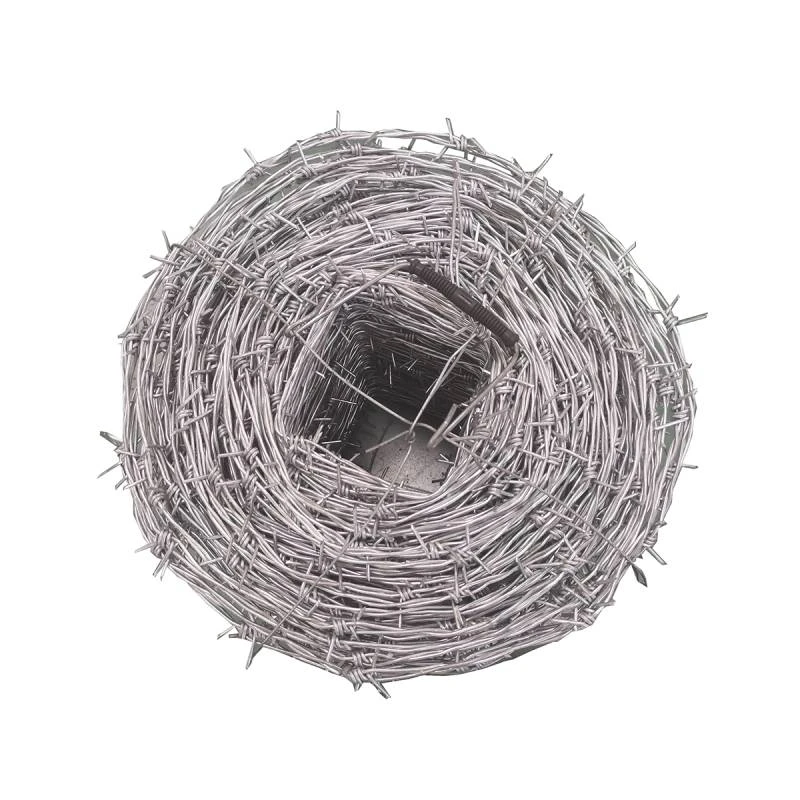The Intriguing History and Uses of Barbed Wire in Modern Society
Dic . 10, 2024 21:54
The Symbolism and Practicality of Barbed Wire
Barbed wire, a seemingly simple invention, has had a profound impact on agriculture, security, and even cultural symbolism. Originally patented in the United States in 1867, barbed wire was primarily designed to control livestock and protect farmland. However, its implications extend far beyond its utilitarian roots. This article explores the practical applications of barbed wire, its historical significance, and its role in contemporary society.
The Practicality of Barbed Wire
The primary function of barbed wire is to restrict movement. In agricultural settings, it serves as an effective barrier to keep livestock contained, protecting crops from being trampled and ensuring that animals remain within designated boundaries. The sharp barbs, which protrude at regular intervals from the wire strands, deter animals from attempting to break through, thereby reducing the risk of escape and injury.
Beyond agriculture, barbed wire has found extensive use in security. It is commonly utilized in prisons, military installations, and borders to prevent unauthorized access. The psychological deterrent that barbed wire provides is significant; its presence alone often discourages potential intruders. In this context, barbed wire serves not only as a physical barrier but also as a symbol of safety and control.
Historical Significance
The introduction of barbed wire revolutionized the American West during the late 19th century. As settlers moved westward, the vast open plains presented challenges for managing cattle and protecting property. Traditional fencing methods were often impractical and costly. Barbed wire offered a cost-effective and efficient solution, leading to its rapid adoption and transformative effect on land use and ownership.
However, the proliferation of barbed wire also had unintended consequences. It contributed to conflicts known as range wars between ranchers and farmers, who fought over grazing rights and land access. These conflicts highlight the darker side of barbed wire’s utility, revealing how its implementation can lead to territorial disputes and social strife. The invention, while practical, became a tool for enforcing boundaries that often exacerbated tensions.
barbed wire

Cultural Symbolism
Culturally, barbed wire extends beyond its physical presence. It has come to symbolize division, restriction, and even suffering. In literature and art, barbed wire often represents the challenges and barriers faced by individuals and communities. For example, during the Holocaust, barbed wire encircled concentration camps, symbolizing the confinement and brutal reality of those imprisoned. Artists and writers frequently invoke barbed wire to evoke feelings of entrapment and despair, making it a poignant metaphor for human experience.
Moreover, barbed wire has been used in various movements to critique societal norms and express dissent. Its appearance in protests and art installations reflects the struggle against oppression and the fight for freedom. The imagery of barbed wire serves as a reminder of what is at stake when boundaries are enforced, both physically and metaphorically.
Contemporary Uses and Future Perspectives
Today, barbed wire is still prevalent, but its design and application have evolved. Alongside traditional barbed wire, various forms of fencing and security systems have emerged, integrating technology to enhance security measures. However, the basic principles remain the same barbed wire functions as a line of defense, still relevant in a world fraught with complex challenges surrounding privacy and protection.
As society continues to grapple with issues of identity, boundaries, and freedom, the symbolism of barbed wire may evolve further, adapting to the cultural zeitgeist. Scholars and artists alike will likely explore its multifaceted meanings, ensuring that this humble invention retains its place in the collective consciousness.
In conclusion, barbed wire embodies a duality it is both a tool of practicality and a powerful symbol. Its historical significance as an agent of change in the American West is undeniable, while its presence in contemporary society speaks to lingering issues of division and security. As we ponder the future, barbed wire will undoubtedly continue to evoke strong emotions and complex interpretations within our cultural landscape.




















